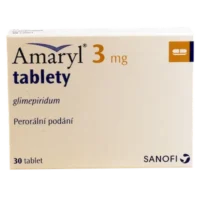Description
Duglimax (Metformin Hydrochloride) Tablets 500 mg/2 mg. №30
Ingredients
Active ingredients: Each tablet contains 500 mg of metformin hydrochloride and 2 mg of an additional component.
Dosage
Dosage: The usual dose is one tablet taken orally with meals. Follow your healthcare provider’s instructions for the best results.
Indications
Indications: Duglimax tablets are indicated for the treatment of type 2 diabetes mellitus in adults.
Contraindications
Contraindications: Do not use Duglimax if you have severe kidney disease or metabolic acidosis. Consult your doctor before starting this medication.
Directions
Directions: Take Duglimax exactly as prescribed by your healthcare provider. Do not exceed the recommended dose.
Scientific Evidence
Scientific evidence: Studies have shown that metformin, the active ingredient in Duglimax, is effective in lowering blood glucose levels and improving insulin sensitivity in patients with type 2 diabetes.
Additional Information
Storage: Store Duglimax tablets at room temperature away from moisture and heat.
Side effects: Common side effects may include diarrhea, nausea, and stomach upset.
Pharmacological Effects: Metformin hydrochloride works by decreasing glucose production in the liver and improving insulin sensitivity in the body’s tissues. This helps lower blood sugar levels and control diabetes.
Clinical Trials: Clinical trials have demonstrated the efficacy of metformin in reducing hemoglobin A1c levels, which reflects long-term glucose control. Additionally, studies have shown that metformin may have cardiovascular benefits beyond its glucose-lowering effects.





